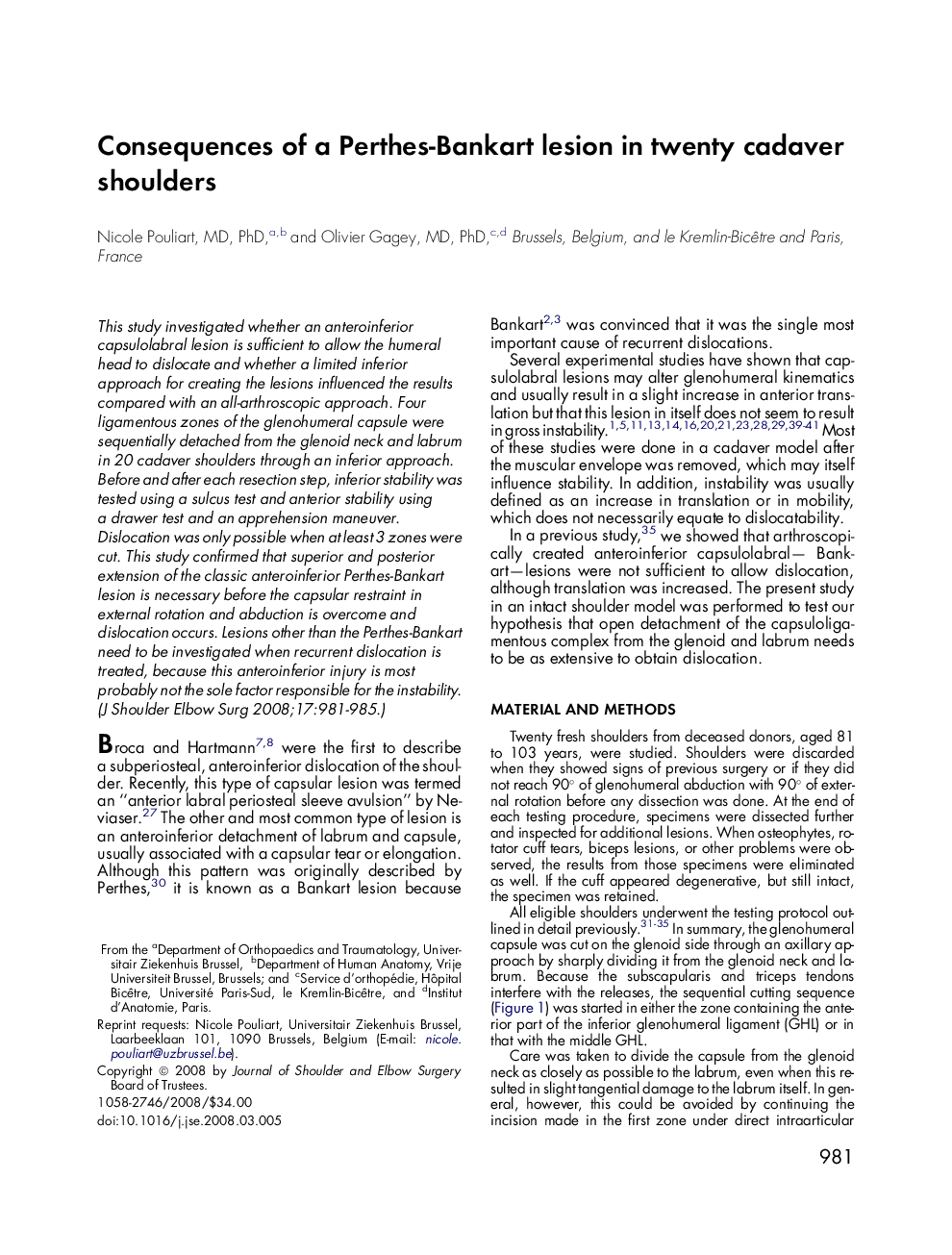| Article ID | Journal | Published Year | Pages | File Type |
|---|---|---|---|---|
| 4074745 | Journal of Shoulder and Elbow Surgery | 2008 | 5 Pages |
This study investigated whether an anteroinferior capsulolabral lesion is sufficient to allow the humeral head to dislocate and whether a limited inferior approach for creating the lesions influenced the results compared with an all-arthroscopic approach. Four ligamentous zones of the glenohumeral capsule were sequentially detached from the glenoid neck and labrum in 20 cadaver shoulders through an inferior approach. Before and after each resection step, inferior stability was tested using a sulcus test and anterior stability using a drawer test and an apprehension maneuver. Dislocation was only possible when at least 3 zones were cut. This study confirmed that superior and posterior extension of the classic anteroinferior Perthes-Bankart lesion is necessary before the capsular restraint in external rotation and abduction is overcome and dislocation occurs. Lesions other than the Perthes-Bankart need to be investigated when recurrent dislocation is treated, because this anteroinferior injury is most probably not the sole factor responsible for the instability.
